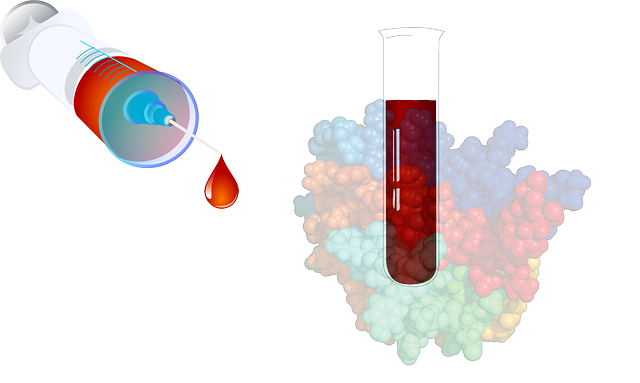A cholesterol blood test, measuring LDL ('bad') and HDL ('good' cholesterol), is crucial for cardiometabolic health. Accurate testing through secure protocols minimizes risks, helping individuals make informed lifestyle choices to prevent heart attacks and strokes. Best practices ensure test reliability, with ideal ranges: total below 200, HDL above 60, LDL under 100, and triglycerides below 150 mg/dL. These results guide healthcare strategies for maintaining optimal cardiovascular health.
Maintaining optimal health requires understanding and managing cholesterol levels. A secure cholesterol blood test is a crucial tool for accurate health assessments, offering insights into cardiovascular risk factors. This comprehensive guide delves into the significance of such tests, exploring best practices for ensuring accuracy and interpreting results effectively. By integrating these insights into your healthcare plan, you can make informed decisions to support long-term well-being.
- Understanding Cholesterol and Its Impact on Health
- The Significance of a Secure Blood Test for Cholesterol Assessment
- Ensuring Accuracy: Best Practices for Cholesterol Blood Testing
- Interpreting Results and Integrating into Comprehensive Health Plans
Understanding Cholesterol and Its Impact on Health
Cholesterol is a waxy, fat-like substance found in all cells of our bodies. It plays a crucial role in maintaining overall health, as it aids in building and repairing cell membranes, producing hormones, and supporting nerve function. However, high levels of cholesterol in the blood can be a significant risk factor for various health issues, particularly cardiovascular diseases. A cholesterol blood test is a vital tool for assessing an individual’s cardiometabolic health.
This simple and non-invasive procedure measures the amount of low-density lipoprotein (LDL) cholesterol, often referred to as ‘bad’ cholesterol, and high-density lipoprotein (HDL) cholesterol, known as ‘good’ cholesterol, in the bloodstream. Understanding these levels is essential as elevated LDL cholesterol can lead to plaque buildup in the arteries, increasing the risk of heart attack and stroke. Conversely, HDL cholesterol helps remove excess cholesterol from the arteries, thereby reducing cardiovascular risks. A secure cholesterol blood test provides reliable data, enabling individuals to make informed decisions about their lifestyle and well-being.
The Significance of a Secure Blood Test for Cholesterol Assessment
A secure cholesterol blood test is pivotal for reliable health assessments, offering a window into an individual’s cardiovascular health. It provides critical data on levels of low-density lipoprotein (LDL) and high-density lipoprotein (HDL), known as “good” and “bad” cholesterol respectively. Accurate measurement is paramount to identify risk factors for heart disease and stroke, enabling proactive steps towards prevention or management.
Secure testing ensures privacy and safety, using standardized protocols and secure storage of samples. This minimizes the risk of contamination or mishandling, ensuring reliable results that guide personalized healthcare decisions. By prioritizing a secure cholesterol blood test, individuals can gain valuable insights into their overall health and take necessary actions to maintain optimal cholesterol levels.
Ensuring Accuracy: Best Practices for Cholesterol Blood Testing
Ensuring Accuracy: Best Practices for Cholesterol Blood Testing
When it comes to cholesterol blood testing, accuracy is paramount. To achieve reliable health assessments, it’s essential to adhere to best practices that minimize errors and maximize precision. These include proper sample handling—from collection to storage—to prevent contamination or degradation. Using well-calibrated equipment and following manufacturer guidelines for test procedures is crucial. Additionally, ensuring adequate training for healthcare providers conducting the tests can significantly reduce human error.
Regular quality control measures, such as running control samples alongside patient specimens, help maintain the accuracy of results. Standardization of protocols across laboratories also plays a vital role in achieving consistent outcomes. Lastly, double-checking procedures and reviewing results with a qualified healthcare professional enhances the overall reliability of the cholesterol blood test.
Interpreting Results and Integrating into Comprehensive Health Plans
After receiving your cholesterol blood test results, it’s crucial to understand what they mean and how they fit into your overall health profile. Total cholesterol is measured in milligrammes per decilitre (mg/dL), with optimal levels typically below 200 mg/dL. High-density lipoprotein (HDL) cholesterol, often referred to as ‘good’ cholesterol, should be above 60 mg/dL, while low-density lipoprotein (LDL) or ‘bad’ cholesterol levels should ideally stay under 100 mg/dL. Triglycerides, another type of fat in the blood, are measured in milligrammes per decilitre (mg/dL), and levels below 150 mg/dL are considered desirable.
These results play a pivotal role in developing comprehensive health plans. If your cholesterol levels are within healthy ranges, regular monitoring can help maintain this. However, elevated cholesterol may indicate the need for lifestyle changes such as adopting a healthier diet, increasing physical activity, and potentially exploring medical interventions like statin medications. Integrating these findings into your healthcare strategy is essential to managing cardiovascular health and reducing the risk of associated conditions.
A secure cholesterol blood test is an indispensable tool for accurate health assessments. By understanding cholesterol’s impact on overall well-being and implementing best practices during testing, individuals can gain valuable insights into their cardiovascular health. Interpreting results correctly allows for the development of comprehensive health plans, empowering folks to make informed decisions for a healthier future. Regular cholesterol blood tests are a game-changer in navigating the intricate landscape of personal health.
